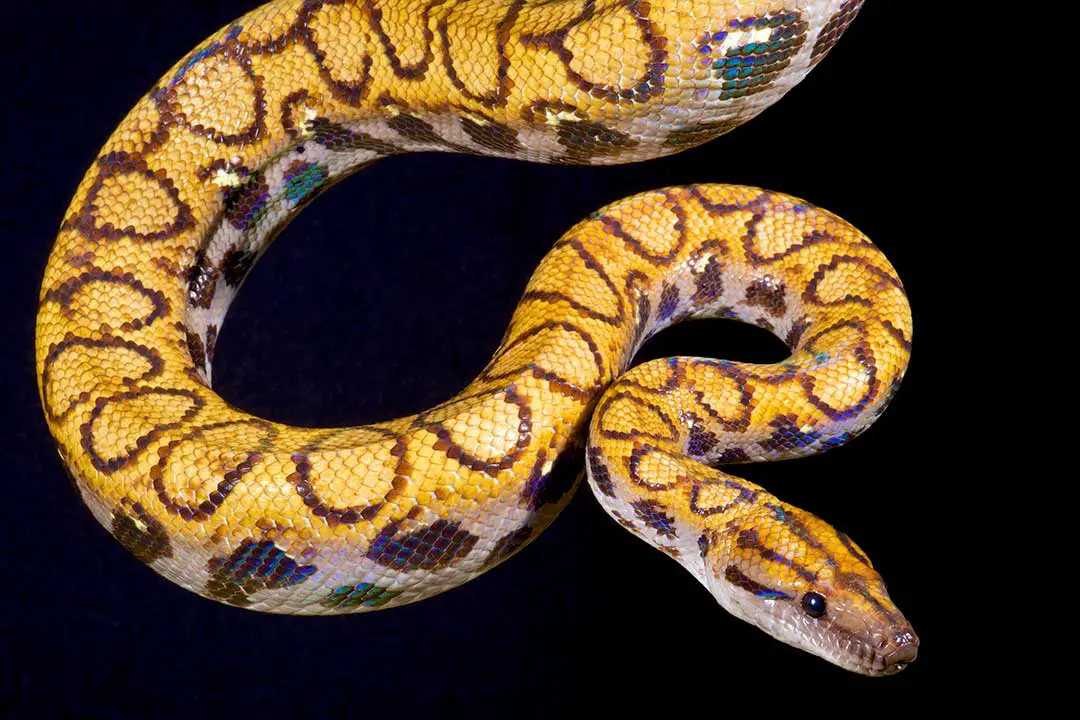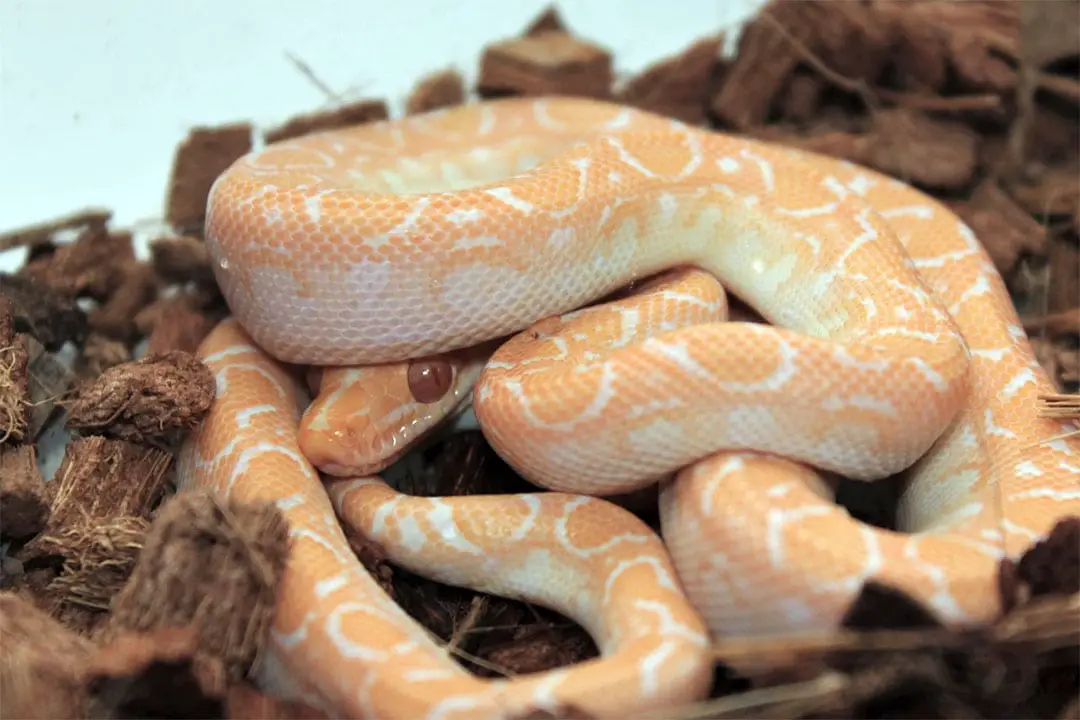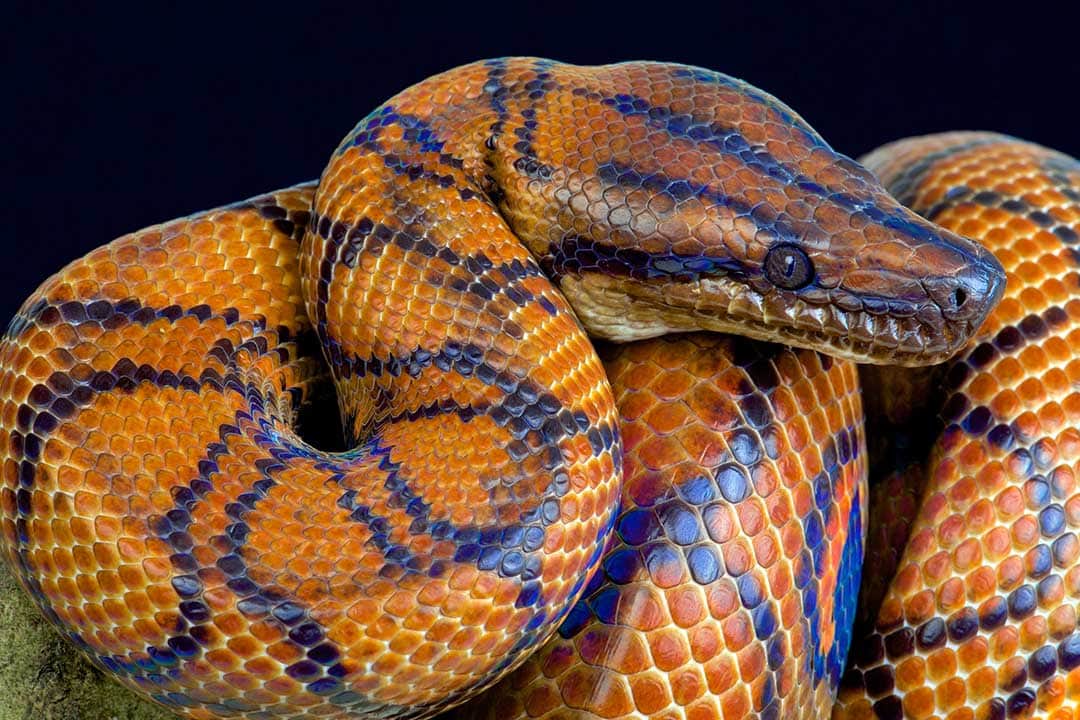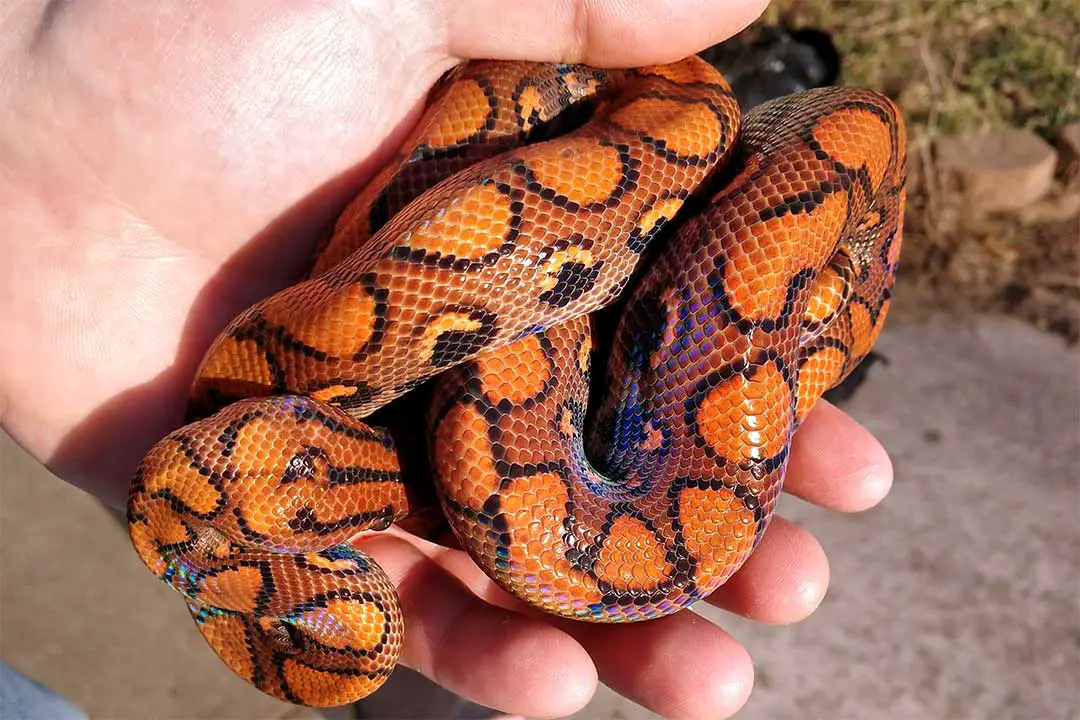Rainbow boas are beautiful snakes that have an iridescent sheen to their scales. These snakes are found in Central and South America and are part of the genus Epicrates.
This article will go over the species and whether they are found in captivity.
1. Brazilian Rainbow Boa
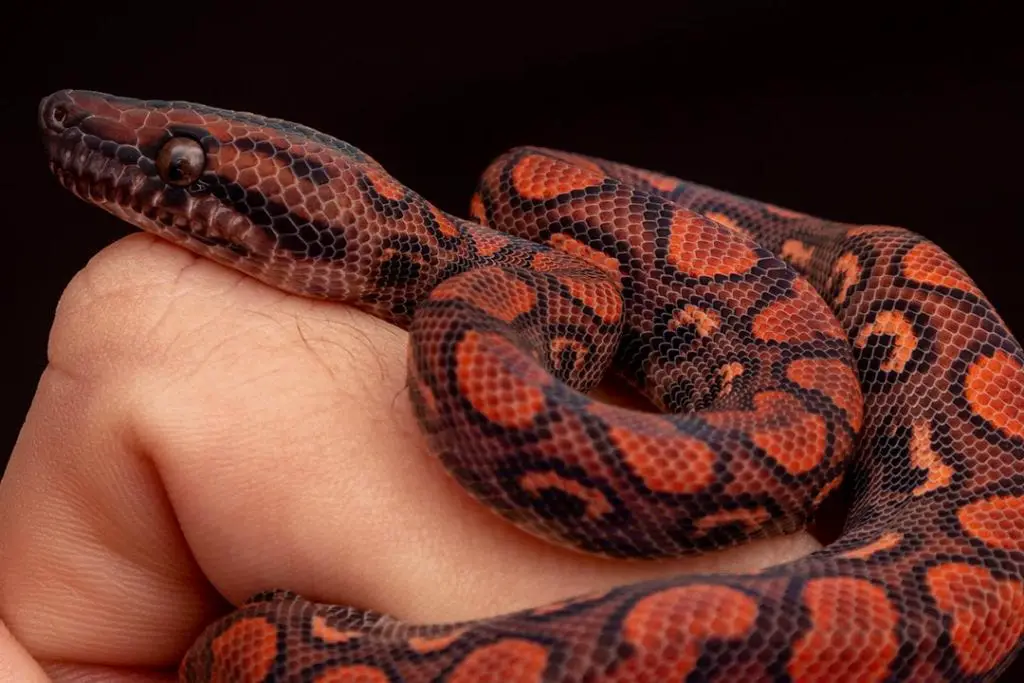
The Brazilian rainbow boa (Epicrates cenchria) is the most famous member of the genus. This snake is the most common in captivity (see my rainbow boa care sheet for enclosure setup, feeding and more).
They are loved for their beautiful red color and intense patterning. These snakes are so common that they have many morphs available in the pet trade.
This is one of the longest snakes in the genus, they can easily be 6 feet as adults.
They are native to Central America and move down into South America where they can be found east of the Andes and reaches northern Argentina.
There are currently 5 recognized subspecies. There were 9 at one point, but a study from 2008 split several of these into separate species. The species currently has five recognized subspecies.
These are the Marajo Island rainbow boa (E. c. barbouri), the Peruvian rainbow boa (E. c. gaigeae), the Espirito Santo rainbow boa (E. c. hygrophilus, the Central highland rainbow boa (E. c. polylepis), and the standard Brazilian rainbow boa (E. c. cenchria).
2. Colombian Rainbow Boa
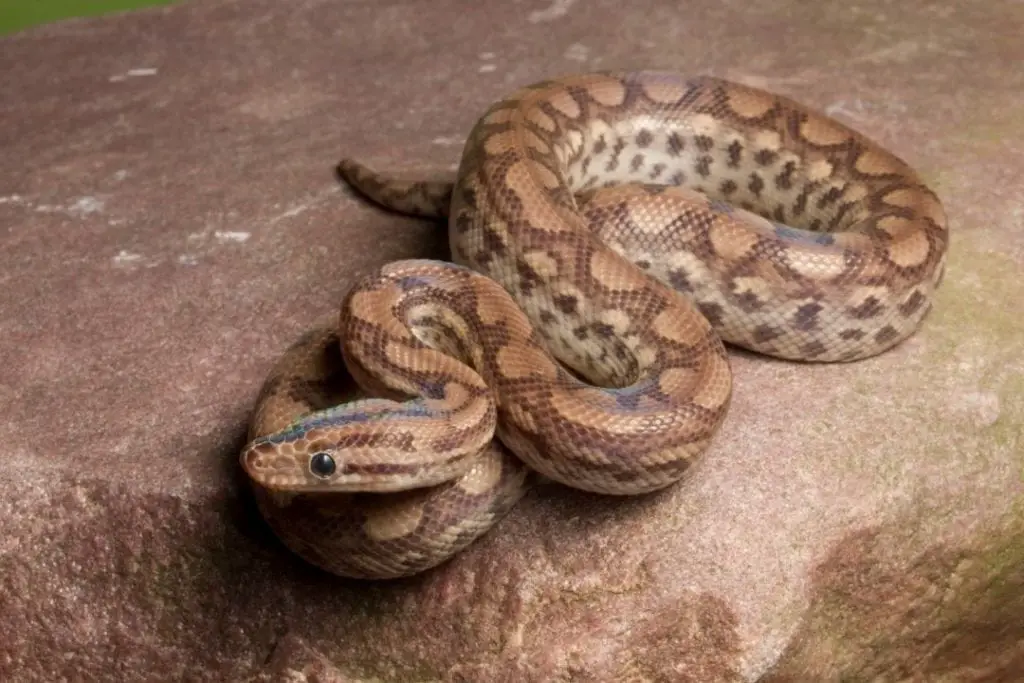
The Colombian rainbow boa (Epicrates maurus) is the next most common rainbow boa in the pet trade. They are typically smaller at only 3 to 5 feet as adults.
They tend to be brown and their patterning tends to fade in adulthood. These snakes have an interesting change in coloration from day to night.
Many animals with wild coloration will change to a lighter color with more noticeable patterning and a mottled silver on the sides of the snake.
It is native to southern Central America, Trinidad and Tobago, and the northern portion of South America.
Colombian rainbow boas are considered the easiest to keep in captivity. You can even find color morphs of this species.
One interesting note is that this species is capable of parthenogenesis.
This means that a female snake gave birth to a litter without needing to breed with a male. All of the young snakes would be genetically identical to the mother.
3. Argentine Rainbow Boa
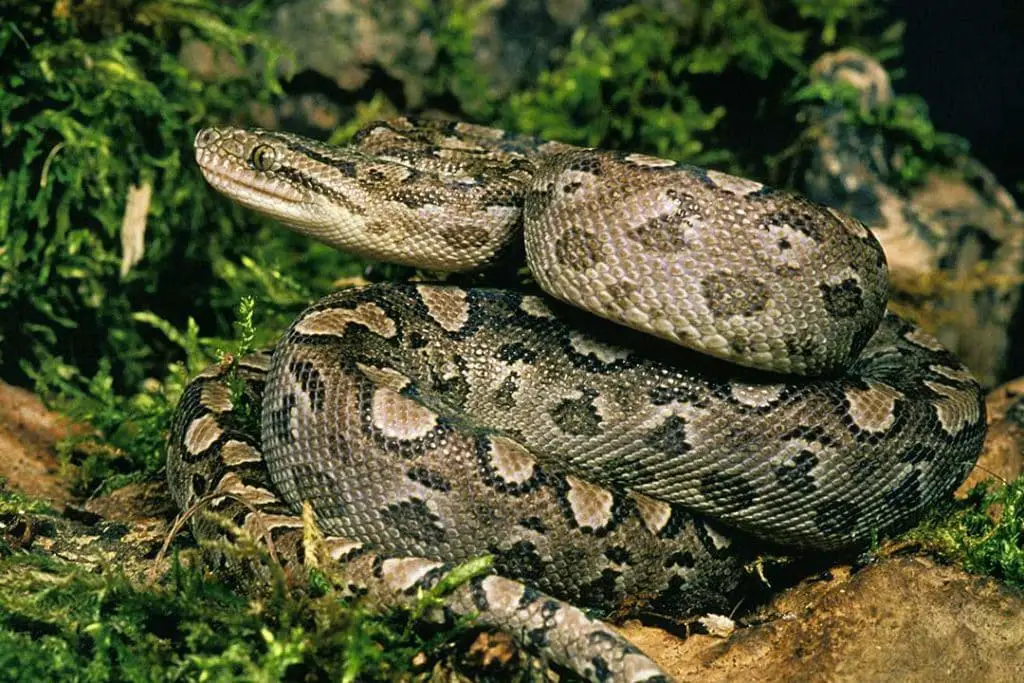
The Argentine rainbow boa (Epicrates alvarezi) is a smaller snake at a length of around 4.5-6 feet as an adult.
They are noted as being a bit more slender than other species of rainbow boas. They are typically found in Argentina.
These snakes are less common in the pet trade, but you can find captive-bred animals for sale.
They seem to reproduce fairly easily in captivity, so keep an eye out for a breeder if you want to own this species.
They are fairly typical rainbow boas. They are nippy as babies but calm down with age. The species is named in honor of Antenor Álvarez, an Argentine herpetologist.
4. Caatinga Rainbow Boa
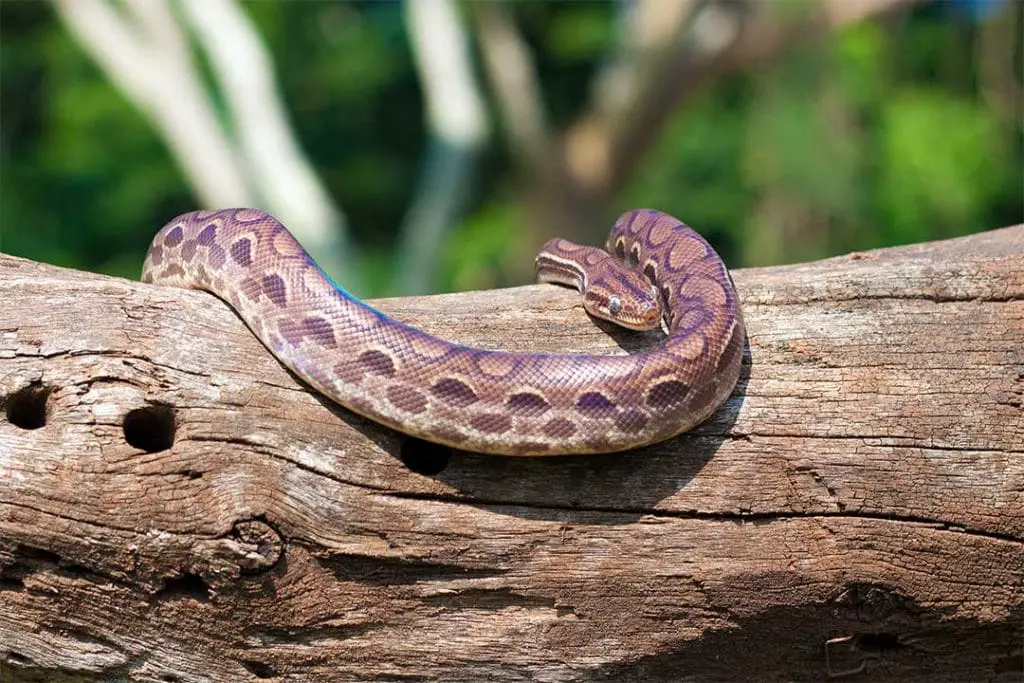
The Caatinga rainbow boa (Epicrates assisi) is not well-known in English-speaking areas. These snakes are found primarily in Brazil. They are very uncommon in the pet trade in the United States.
There are a few videos of captive animals on the internet, but they are typically imported animals.
They are occasionally found as pets in their native Brazil, but most owners seem to prefer the more common Brazilian rainbow boa or the Colombian rainbow boa.
This species is also rarely exported, so finding one for a pet would be difficult.
5. Paraguayan Rainbow Boa
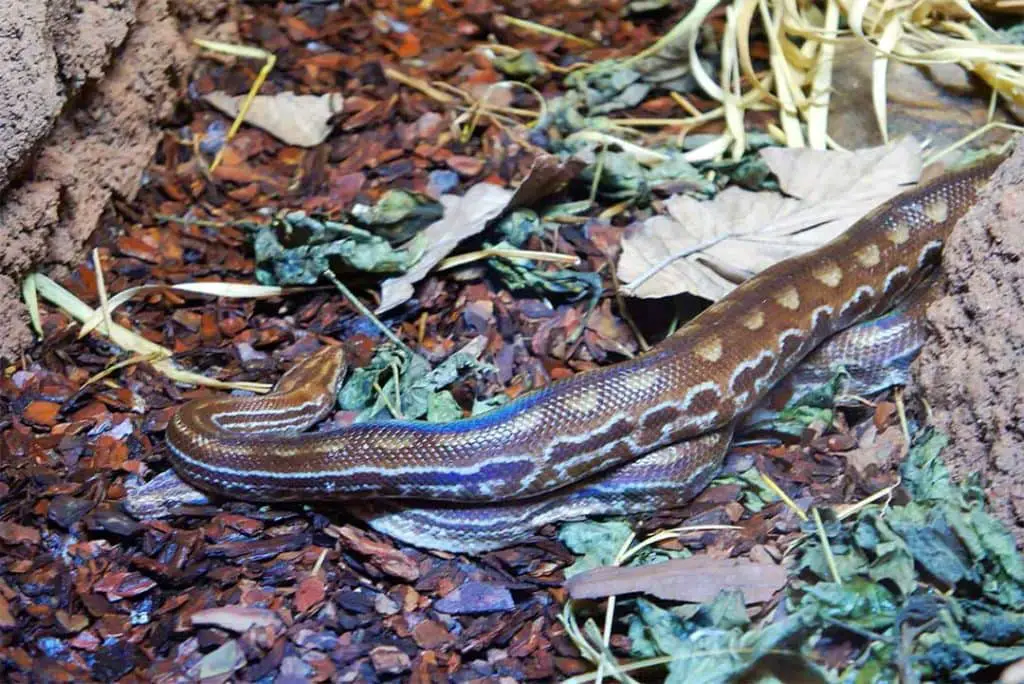
The Paraguayan rainbow boa (Epicrates crassus) is a smaller boa found in Paraguay, Bolivia, Argentina, and Brazil. They have dark brown markings on a brown to yellow background.
These are sometimes found in the pet trade, but they may still be sold as a subspecies of the Brazilian rainbow boa. They are a separate species so be sure to do your research on what snake the person is selling.
Most animals are unlikely to be captive-bred, so be sure to ask where the animal came from. Wild snakes don’t always adapt well to captivity and can have a number of parasites that can be transferred to other snakes in your home.
Other Rainbow Boas
Animals that are not part of the Epicrates genus are sometimes referred to as rainbow boas in the pet trade. This is because they have the same structure to their scales that gives them the iridescent sheen.
Common names and out-of-date species names can cause confusion for a potential owner. If you want a snake, be sure you know exactly what snake you are getting and where it is from.
Even if the species is less common, knowing where a snake is from can help you know a temperature range to start with and humidity levels.
Always ask questions about a snake you want, particularly if it is not a commonly kept snake. If an animal is wild-caught, make sure you know where it came from and what its natural habitat is like.
Conclusion
There are 5 recognized species of rainbow boa. At one point, the popular Brazilian rainbow boa had 9 subspecies and some of these were found to be entirely different species.
This has caused confusion in the pet trade, so be sure to do your research and even look up how to tell apart the species so you know what your pet is.
Some species are also threatened in the wild, so make sure you know what you are buying. If you have any questions or comments, be sure to leave them below.
